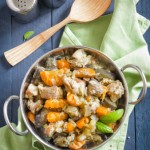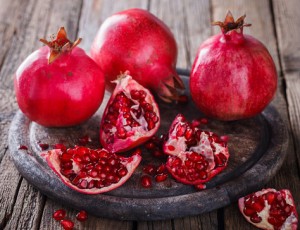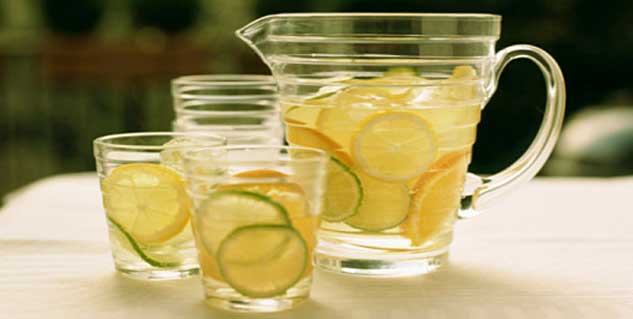Know Your Good Fats
Are you weary of hearing about those bad, bad fats? “Don’t eat that junk. It’ll make you fat.” Many writers can’t resist the words artery clogging when they mention saturated fat.
I won’t distinguish between fats and fatty acids or other complications, but there are distinctions that will help you make sense of the prattle. I promise that what you learn here will be useful, and different from what you have been taught.
Saturated fats are part of all fat products but make up more than half in meat and milk. A saturated fat in coconut oil is medium-chain triglyceride. Saturated, chemically, means that there are no double bonds. Double bonds are the places in a molecule where hydrogen can be added artificially. Palmitic and stearic acids are saturated.
Monounsaturated means that there is one double bond. Olive oil, avocado, and canola have a goodly portion of monounsaturated molecules. Oleic acid is monounsaturated.
Polyunsaturated means that there are two (sometimes more) double bonds. These are the common vegetable oils—corn, soy, and cottonseed—which have too much omega-6 oil. Omega refers to the placement of double bonds in the molecule.
Superunsaturated fats, the omega-3 oils, have three, four, five, or more double bonds. Most writers lump these with the polyunsaturated, but they are very different in effect. Food labels, to be useful, should list them separately.
Hydrogenated fats are unsaturated fats that have been treated with hot, high-pressure hydrogen to fill some of the double bonds. One result of this is trans-fats.
Saturated fats may not be so bad after all. Eskimos who live on blubber don’t get plugged arteries, and in the South Seas, coconut oil users do fine. Most meat products have mono- and polyunsaturated fractions. Saturated fats increase both HDL and LDL, which may be a good thing. Remember, HDL is good. Very good. Don’t trash saturated fats.
Monounsaturated fats are universally endorsed. Olive oil is credited for the good health of southern Europeans. Olive oil helps people of the island of Crete to be some of the world’s healthiest people, which may also be due to a lot of purslane in their fare. Purslane is a common garden weed that happens to be rather good in salads and contains some omega-3 fat.
The Best Fat
Omega-3 fats are vital but very scarce in modern fare. When deficient, beware of developing heart disease, mental problems, and a multitude of chronic conditions. Plant sources provide linolenic acid (note that n). Flaxseed is a rich source of linolenic acid, and bits of this healthful fat are found in most plant sources. More vital DHA and EPA fats (with long chemical names) are found in animal sources, mainly cold-water fish and wild or grass-fed animals. These are necessary for healthy cell membranes. In commonly available foods, you won’t get nearly as much DHA and EPA as you need. Salmon, cod, shad, herring, and a few other fatty cold-water fish are good. Sardines may be best of all. Unless you live in Alaska, it’s hard to get a healthful amount of DHA and EPA. Eat fish, but also buy fish oil capsules or cod liver oil.
Now, Will the Real Bad Fats Please Stand Up?
Polyunsaturated fats, the omega-6 vegetable fats, are necessary nutrition in moderate amounts. An abundant type is linoleic (without the n). They are usually listed with good fats. No! They are in great excess in our modern fare, and they are inflammatory. Nearly all of our boxed and bagged snack foods have these fats, made even worse by hydrogenation. (Nuts have omega-6 oil but are very good nutrition anyway. Borage and primrose oils have a good form of omega-6.)
Trans-fats are the demons of this decade. No. Small amounts of natural trans-fat may be healthful. The problem is hydrogenation. Hydrogenation (partial hydrogenation) eliminates natural unsaturated fats and produces a variety of fats, including trans-fats, which the human body may have never before encountered. Food labels, to be useful, should list hydrogenated fat, not trans-fats, and the appropriate level is zero.
Cholesterol?
Much that you hear about cholesterol is wrong. Cholesterol is not a fat chemically, but it is often regarded as a bad fat. Wrong. Cholesterol, because of total insolubility, gives body cells stability in a water environment. It is also necessary for vitamin D and hormone production. High cholesterol may be due to a shortage of these products, as the body tries to compensate.
We were told not to eat egg yolks because of cholesterol. Wrong. It is unlikely that anyone was ever harmed from eating eggs. We were told that there is good cholesterol (HDL) and bad cholesterol (LDL). These are not cholesterol, but protein-cholesterol combinations needed for carrying insoluble cholesterol in the blood. HDL is indeed good, but LDL has minimal significance.
Taking drugs to lower cholesterol is the wrong treatment for the wrong condition. I have to say this, though it is contrary to almost all medical literature: low cholesterol may be more of a problem than high. The total cholesterol figure, which combines blood fat, LDL, and HDL, is useless and detracts attention from real risk factors, which are low HDL, high blood fat (triglycerides), and chronic inflammation. Homocysteine level is one of several indicators of inflammation. Cholesterol particle size matters, too, which is not so easily tested.
Is High Fat the Problem?
You have heard of the French paradox and places around the world where people eat high fat but don’t get much heart disease. The explanation may be that they get many more plant-based antioxidants. They also get much more vitamin D than we do.
The problem with fats, mostly, is not that fats are bad. The larger problem is that they, along with sugar and starches, take the place of more vital nutrition. A person who fills up with meat, beans, and grain products will get very little omega-3 fat and little vital nutrition from low-starch vegetables. It is not necessary to avoid meat. It is necessary to get a good spectrum of nutrients, including a spectrum of different kinds of fat. Do you look for foods labeled “low fat”? Don’t be fooled. These are often overpriced because they are presented as healthful. They leave you deprived of good fats. But first, eat your veggies.
Not Enough Veggies!
Protein is necessary, and high protein fare is good. Eat eggs: the white for protein and the yolk for wonderful nutrients. However, protein, fat, sugar, starch, beans, eggs, nuts, and whole grains must not take the place of spinach, celery, and onions. The onion and lettuce on your Big Mac barely count. However difficult the changes, you can be happy and healthy with lots of broccoli, asparagus, chard, beets, carrots, tomatoes, squash, cabbage, and berries. Include fruit, of course, but by all means, eat your veggies!
What You Should Remember
Healthful fare includes a spectrum of many nutrients, but with balance. Along with plentiful vegetables and some fruit, include a little saturated fat, more monounsaturated fat, much less vegetable oil than usual, and however you can do it, get EPA and DHA. While we are bombarded with messages about what is healthy and what is not, and as we gaze on endless aisles of packaged foods claiming to be low in fat, it is most important to remember that balance is key. Knowing the right combination of fats to consume is vital to your health.
** This article is one of 101 great articles that were published in 101 Great Ways to Improve Your Health. To get complete details on “101 Great Ways to Improve Your Health”, visit http://selfgrowth.com/healthbook3.html
-
Advices On How To Burn Fat
If you have excess fat stored in your body and would like to get rid o
-
5 Cruel Foods Part of Normal Diets
Our diets consist of many different foods that allow us to indu
-
Dont Fall For These Weight Loss Gimmicks!
Have you heard about the new weight loss patch? You wear it behind
-
Books On Fastest Way To Lose Weight
The number of books dealing with the all time hot issue of fat loss an
-
Weight Loss And The Cause And Effect Principle
A fundamental principle is at work in the whole biological process of
-
Healthy breakfast ideas for weight loss
It is a fact that breakfast is the most
- DON'T MISS
- Washington Post Examines Use Of Incentives For Weight Loss
- Dieting Dos and Donts
- 8 Interesting Tips to Transform from Plus-Size to Normal-Size
- The Best Ways to Lose Weight
- Slimming Down the Safe Way For Women
- Why Dont Our Bodies Want To Lose Fat?
- Revamp Your Diet Plan With one of these Tips
- Turning 40 Inspired Me to Lose 75 Pounds
- Fat Burning Tips
- New Years Fitness Resolutions Why Do You Break Them Part 1




